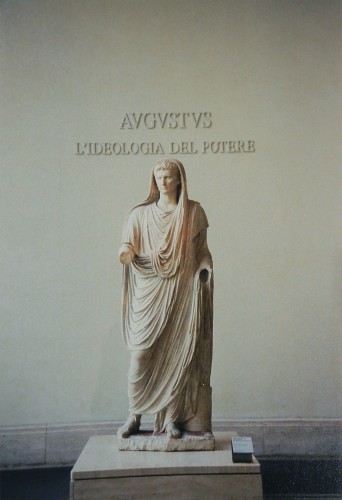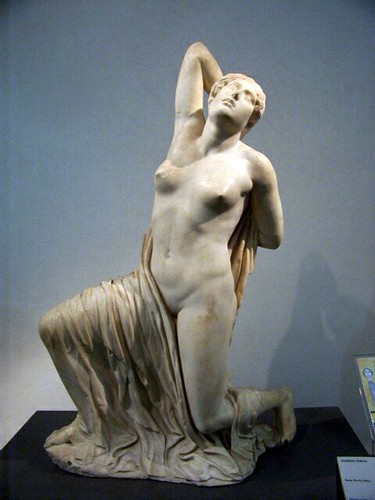Instead, my favorites were two sculptures with understated grandeur, relative static poses belied the hidden tension.
The first was a marble statue of the Roman emperor, August as Pontifex Maximus. It was a full length sculpture, capturing the emperor, in flowing robe, walking quietly, as if weighing something of considerable importance. It's a fleeting moment, unguarded, without officious pomposity. A high-born nobleman for sure, but also intensely human. Pensive, and a bit sad.

August as Pontifex Maximus, Palazzo Massimo alle Terme (Museo Nazionale Romano), Rome, Italy
However, that sadness would be eclipsed easily by the grand tragedy of the Dying Niobid, another marble sculpture, capturing one of the queen Niobe's fourteen children being shot to death by the vengeful arrows of the slighted Apollo and Artemis, when Niobe boasted that she had much greater number of children than those of Leto, Mother of Apollo and Artemis.
The Dying Niobid, fleeing, was shot on her back, faltered to be on her knee, bent backwards, both hands reached to the killing tool on her back. Her frontal torso and one leg exposed, revealing the beauty and the vulnerability of this tragic figure. Her face was peaceful, almost like asleep, without obvious pain, though she did have a questioning look upon closer inspection. Even her pose, though unbalanced, was not in painful twist. The sculptor did not want to shock the viewer, rather, he wanted to present this moment in restrained dignity. The more peaceful she seemed, the greater the sense of tragedy.

Dying Niobid, Palazzo Massimo, Museo Nazionale Romano, Rome
Source: diffendale
My Favorite Museum Collection Series
>> My Favorite Museum Collection Series 13: My Favorite Artworks at Basilica Sancti Petri (Papal Basilica of Saint Peter)
<< My Favorite Museum Collection Series 11: My Favorite Artworks at Galleria Borghese, Rome





No comments:
Post a Comment